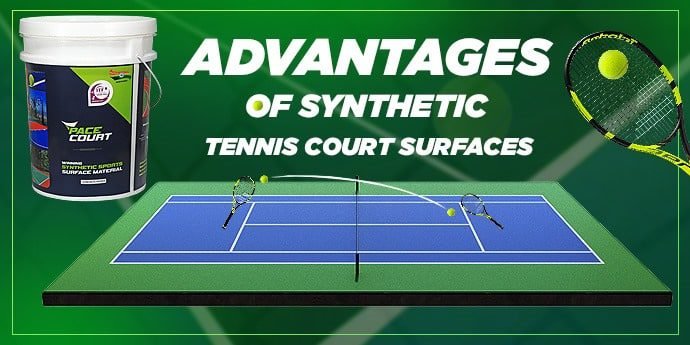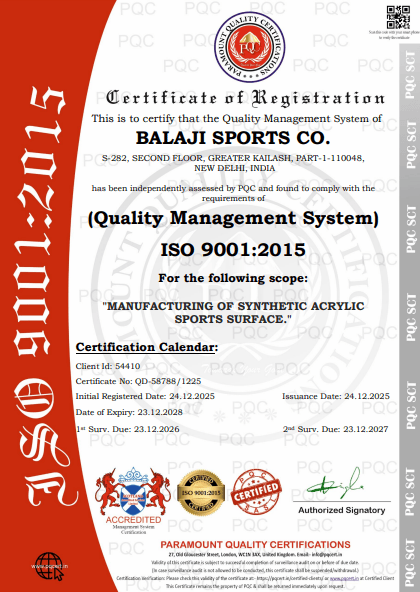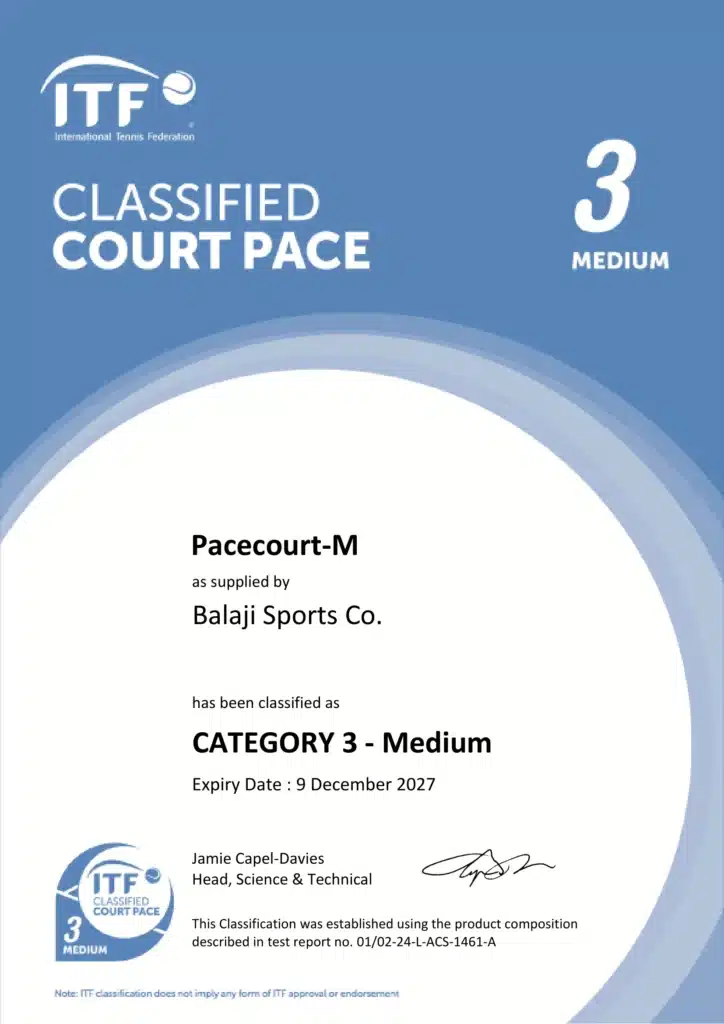Tennis Court Surface
Whether it’s a Grand Slam or a friendly local game, the tennis court surface is key to performance, safety and the overall playing experience. From bounce and ball speed to player comfort and injury prevention, the surface beneath your feet is more than just flooring — it’s a game changer. Pacecourt specializes in high-quality tennis court flooring solutions for all playing needs and environments. Here’s a guide to the different tennis court flooring available today, including the materials, usage and suitability for different conditions. Whether building a new court or resurfacing an old one, choosing the right tennis court surface with Pacecourt means durability, performance and long-term value for all levels of play. Why the Right Tennis Court Surface Matters The type of court surface can make all the difference. A fast surface like grass is great for serve-and-volley players, quick points and low bounce. A slow surface like clay is for baseline players who rely on strategy and endurance, longer rallies and higher bounce. Each surface affects bounce consistency, grip and movement, so the choice of surface is a performance factor. From a safety perspective, the right surface can reduce the risk of injury. Some court flooring materials have better shock absorption, reducing stress on joints and preventing long-term physical strain. Weather compatibility is another key factor—some surfaces perform better in humid, dry or rainy conditions, so year-round use. In recreational or institutional environments, the decision is often driven by budget, maintenance and multisport use. However, in professional environments, surface selection is a tactical decision that can win or lose matches. Choose the right surface with expert guidance from Pacecourt and get optimal performance, durability and safety for both casual and competitive play. Types of Tennis Court Surfaces There are four types of tennis court surfaces: Grass, clay, hard and artificial grass. Each has its own play characteristics, maintenance requirements and looks A. Hard Court Hard courts are the most common surface worldwide, especially in schools, sports clubs and public parks. B. Clay Court Slower pace, clay courts are common in Europe and South America. C. Grass Court The original tennis surface, still used in Wimbledon and a few elite clubs. D. Synthetic Acrylic Court (Pacecourt Specialization) Synthetic acrylic courts are gaining popularity in India and other tropical countries. Key Factors to Consider When Choosing a Tennis Court Surface Before selecting an appropriate tennis court surface, there are a number of important things to take into consideration for best performance, longevity and value. Player Level & Usage: The usage and play level have a great influence in the selection of a surface. Leisure players prefer cushioned or slower courts for comfort and convenience, while skilled or competitive players desire faster, responsive surfaces for high-speed play. Budget: Take into account both the long-term maintenance cost and the initial installation cost. Natural grass courts are prestigious but costly. Synthetic acrylic flooring is less expensive and provide wonderful long-term value. Maintenance: Clay and grass courts require regular maintenance, watering, rolling and mowing. Hard and synthetic tennis court surfaces, such as those from Pacecourt, require very little maintenance. Climate: Climate is a significant consideration. Heavy rain or humid areas are improved by synthetic or hard surfaces that can be played on in all weather. Durability: To what extent does the surface perform under heavy use and climatic variations? Acrylic surfaces find the optimal balance of performance, resilience and longevity. Latest Trends in Tennis Court Surfaces Modern tennis court builders are getting more and more into sustainable and performance-driven innovations to meet the changing demands. One of the trends is the use of eco-friendly tennis court flooring materials like low-VOC acrylic coatings and recycled rubber layers, which reduce environmental impact and maintain durability. Another big advancement is UV-resistant coatings, which protect the court surface from color fading and material breakdown, especially in areas with intense sunlight. These coatings maintain aesthetics and surface integrity over time. Water drainage systems are also a must-have, especially in monsoon-prone areas. These systems allow courts to be playable shortly after rain, minimise downtime and increase usability. And there’s growing demand for multisport compatibility. Acrylic surfaces are now designed to accommodate multiple sports like basketball, volleyball or pickleball, maximizing utility and return on investment. With these advancements, companies like Pacecourt are at the forefront, offering top-of-the-line tennis court surface solutions that combine sustainability, durability and versatility. Tennis Court Surface Installation Process Installing a synthetic tennis court surface is a precise process that requires technical know-how and professional expertise to last. First is base preparation, where a solid, level base is created using asphalt or concrete to give structural integrity. Next is the coating application, where multiple layers of high-quality acrylic materials are applied. These layers give texture, cushioning and color to the surface and consistent bounce and player comfort. Once the coatings are set, line marking and finishing are done. It involves applying court lines and a final finish that gives grip and protects the surface from UV and rain. Hiring professional tennis court surface builders like Pacecourt is key to a successful installation. Professionals will ensure the right techniques and materials are used and you will get a court that is durable, safe and suitable for all levels of play—recreational or professional. Best Sports Flooring for All Sports: Smooth Performance & Strong Grip Multi-Purpose Court Flooring Pickleball Court Flooring Volleyball Court Flooring Basketball Court Flooring Walking Track Flooring Cycle Track Flooring Conclusion Choosing the right tennis court surface is a big decision that balances performance, looks, durability and cost. Each surface type—from fast and slippery grass to tough synthetic acrylic- has benefits that are suited to different playing styles and environments. In India, synthetic tennis court surfaces are fast becoming the preferred choice for recreational, institutional and club-level play. All-weather resilience, low maintenance and consistent playability make them a practical and long-lasting option. To get the best results, partnering with experienced tennis court builders like Pacecourt is a must. With premium materials and expert installation techniques, Pacecourt builds





